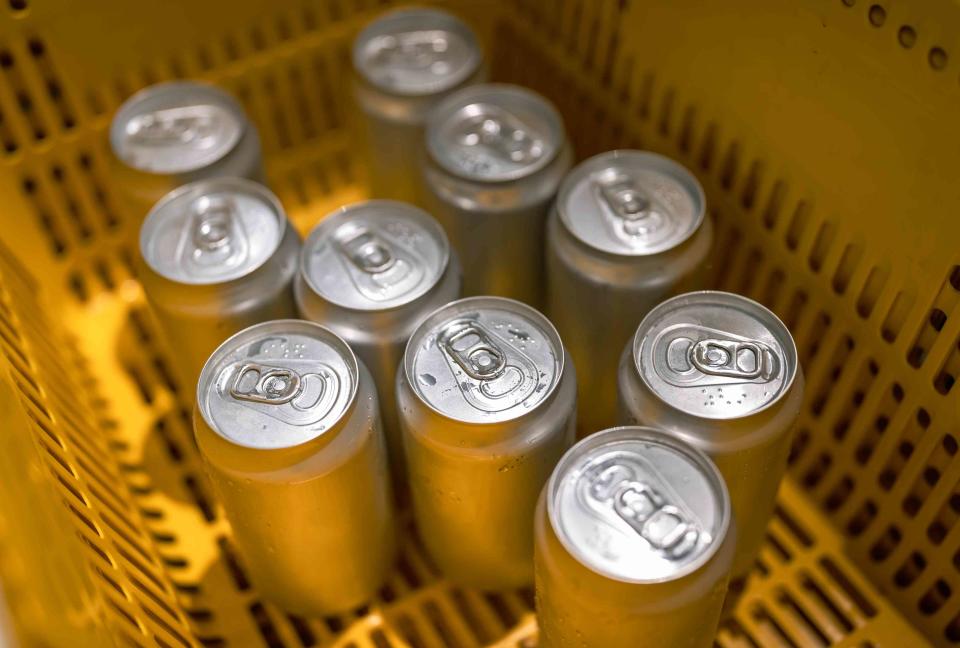Does Your Canned Wine Smell Like Rotten Eggs? Here’s What to Do, According to Cornell Scientists
There's an easy fix for that.

Susumu Yoshioka / Getty Images
Ever crack open a can of wine and realize it doesn’t smell quite right? We all have.
Unlike wine poured from a glass bottle or even dispersed from a box, canned wine, typically served chilled, is known for its accompanying rotten egg smell. Not always the most appetizing for a patio pounder.
The proliferation of this scent as the popularity of canned wine has increased led researchers at Cornell University to look into why this particular canned beverage can be so, well, stinky. And the results are promising for a better-smelling canned wine future.
The report, “Hydrogen Sulfide Formation in Canned Wines: Variation Among Can Sources,” finds that sulfites in wine react to aluminum cans, creating hydrogen sulfide, which releases that recognizable rotten egg smell. Various types of ultrathin liners can be used to prevent this chemical mingling and the resulting fumes.
Related: In Case of Party, Bust Out These 20 Canned Drinks
The impetus for the research dates back to 2018, when wineries started reaching out to Gavin Levi Sacks, an associate professor of Food Science at Cornell University and study co-author, regarding issues with sulfurous off-aromas.
The familiar but polarizing rotten egg sulfuric scent isn’t unique to canned wine. “This phenomenon can also occur in bottled wines, and it’s often linked to fermentation issues,” explains Sacks. “At first that’s what I thought the cause was. However, after the third or fourth call [from wineries], it occurred to me that this was likely some specific reaction occurring between certain cans and certain wines.”
Related: How Long Does Wine Last After Opening?
Since 2018, Sacks notes that wine producers and can manufacturers have already learned a lot, curbing the widespread phenomenon of a bad smell in canned wine by using appropriate liners in the cans to separate the metal from the liquid. Still, there are improvements that can be made. Researchers want to design better liners that will limit the passage of sulfur dioxide (SO2) from the wine to the can and wineries can also choose cans with appropriate liners.
Consumers can also prevent bad smells, in part, by drinking their canned wine sooner rather than later.
“Most canned wines are intended to be consumed within a few months,” says Sacks. “If the wine has been in a can for a while, say, over a year, there’s definitely a greater risk of sulfurous off-aroma formation.” Some producers add a canning date to each can, which can help consumers time their consumption and avoid the putrid aroma.
Related: You Can Buy Better Wine if You Know What to Look for on the Bottle Label
To avoid the risk of any scent, choose canned red wine, which can be enjoyed chilled or at room temperature. “Red wines typically have lower concentrations of the active (molecular) form of SO2, and we very rarely observe sulfurous aromas in canned red wines,” says Sacks, a noted canned wine lover.
Prefer bubbly, white, and rosé? There’s also an easy hack to rid it of its potential stinkiness: A glass.
“If you’re drinking directly from the can and don’t like the flavor, try pouring it into a glass and swirl for a little while,” Sacks recommends. “In most cases, the hydrogen sulfide will volatilize and be lost within minutes.”
Related: 15 Rules for Great Food and Wine Pairing
Canned wine is nothing new. Wine was sold in beer cans as early as 1935 in the U.S., and the packaging has gone in and out of fashion over the decades. The canned wine boom, however, kicked off in the late 2010s, and the category is expected to keep growing for years to come. The perception of canned wine as a less premium may also be shifting, and this research may help winemakers sell higher quality products and fine wines by the can. For Sacks, canned wine may go the way of the screw top, once a flag of less serious wine, but now a norm for any bottle at any price point, with no indication of quality.
Cracking open a can of Dom Perignon may not be too far off.
For more Food & Wine news, make sure to sign up for our newsletter!
Read the original article on Food & Wine.

